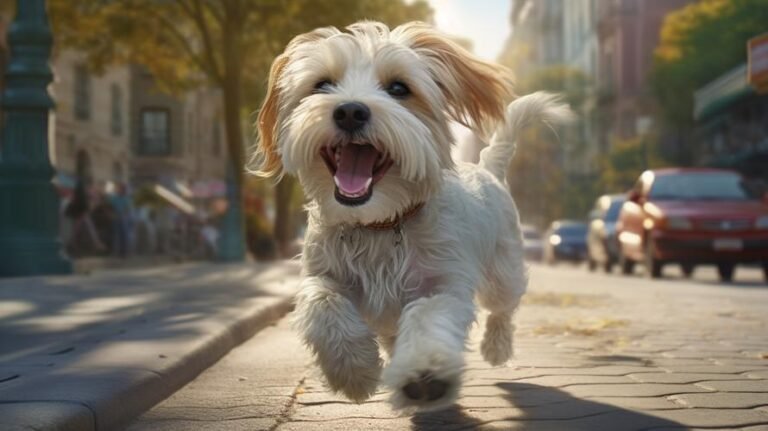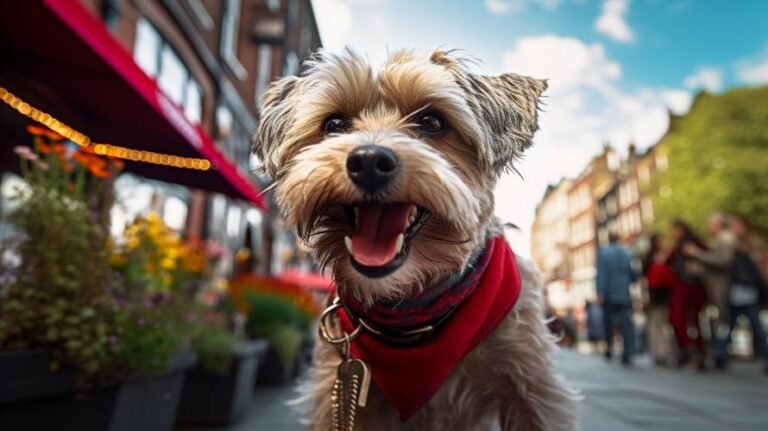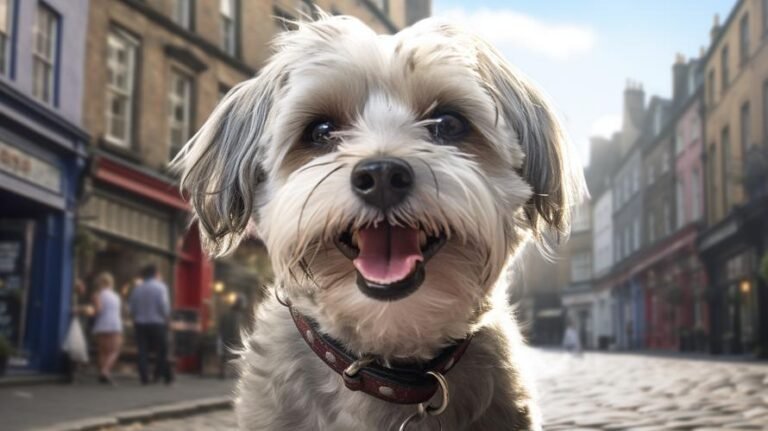Did you know that the whimsically named Dandie Dinmont Terrier is one of the oldest and most distinctive Terrier breeds? A showstopper with its long body and short legs, topped with a poof of hair like the tip of an artist’s paintbrush, the Dandie forever seems poised between a state of dignified seriousness and comical playfulness.
But beyond its quirky looks, what’s the real scoop on raising a Dandie Dinmont? Is this charismatic canine a troublesome terrier or a delightful companion? Before deciding if a Dandie Dinmont Terrier is the right fit for your family, let’s dig into the life of this peculiar pooch.
First and foremost, the Dandie Dinmont carries a badge of nobility in its heritage. Dating back to the 1700s, the breed has a storied past involving gypsies and nobles alike. With such a regal history, you’d be correct in assuming that the Dandie possesses a personality as rich and distinct as its lineage suggests.
But let’s cut to the chase. The word ‘difficult’ is subjective. While one prospective pet parent may see stubbornness, another might perceive a confident independent thinker. And that’s precisely what a Dandie Dinmont offers – a plucky, robust character packaged in a peculiarly elongated frame.
The independence of a Dandie, though, is a double-edged sword. On one side, you’ll have a pet that isn’t clingy or overly needy. They might even remind you of the friend who’s always confidently marching to the beat of their own drum. On the flip side, the Dandie’s independent nature can equate to stubbornness. Training a Dandie isn’t like programming a robot; it’s more like a diplomatic negotiation.
Starting early is crucial. Puppyhood is the golden time for laying down the laws of love and obedience. Training should be consistent but gentle and always lined with positive reinforcement. Harsh tones or punishment may dampen the Dandie’s spirit, and you don’t want that.
The intelligent Dandie Dinmont Terrier needs mental stimulation just as much as physical exercise. So, if you’re thinking of a simple toss of the ball in the yard, you might need to revise your game plan. Puzzle toys, exciting training sessions, and games of hide-and-seek will keep this pupper’s wheels spinning.
Let’s talk about bark-itecture, specifically the territorial proclivities of this breed. The Dandie Dinmont Terrier, with its vigilant nature, can become a bit of a watchdog. This isn’t to say they’ll bark up a storm at every passerby, but they will take guard duty quite seriously. This, however, can be managed with proper socialization and introduction to myriad faces and places in early puppyhood.
Now, about the grooming – the Dandie does demand some panache in its presentation. That signature poof of fur atop their head isn’t self-maintaining, and neither is the rest of their double-coat. Regular brushing and combing are needed to prevent mats from forming. Oh, and let’s not forget a trip to the groomer’s every now and then to keep everything looking dapper.
Perhaps one of the most endearing traits of the Dandie Dinmont Terrier is its health. Generally, it’s a sturdy little canine crossing your path. Though some might be prone to certain conditions, overall, the breed is known for a hearty constitution. With a lifespan that can stretch into the teen years, a Dandie can be a long-term furry family member.
At times, you may find this dandy of a dog asserting its dominance, especially over similar-sized dogs. But never fear, this behavior can be managed by demonstrating clear leadership and setting boundaries. It’s sort of like being the director of a play, guiding the actors to work in harmony.
Regarding family dynamics, the Dandie Dinmont Terrier usually gets along swimmingly with children – particularly if they’ve grown up together. That said, toddlers and this Terrier may not always mix well, given the sometimes rough play of young’uns and the dog’s moderate patience level. As for other pets, early socialization is key if you want your Dandie to be chummy with other animal residents.
What’s more, the Dandie Dinmont Terrier won’t need a sprawling estate for its stomping grounds. This pooch is as comfortable in an apartment as it is in a country home, provided you make sure they get enough exercise to satisfy their moderate energy levels. A daily walk and some playtime can help keep your Dandie fit as a fiddle and content as can be.
As for climates, our dapper Dandie is fairly adaptable. Just don’t expect this furball to willingly don snowshoes or switch to desert gear without a hint of disapproval. Moderate climates work best but ultimately, comfort and companionship will always be this dog’s preference.
In conclusion, while the Dandie Dinmont Terrier may have its challenges, it also possesses a treasure trove of charms. With the right owner – one who appreciates the nuances of its nature and is willing to invest time in proper training, socialization, and care – the Dandie can be an extremely rewarding companion.
The key is understanding and embracing the Dandie Dinmont Terrier for what it is – a uniquely spirited and fascinating breed with an individual streak a mile long. With love, patience, and a sense of humor, you’ll find that this seemingly ‘difficult’ dog is actually a devoted companion, ready to fill your life with joy, laughter, and a touch of that terrier tenacity.



